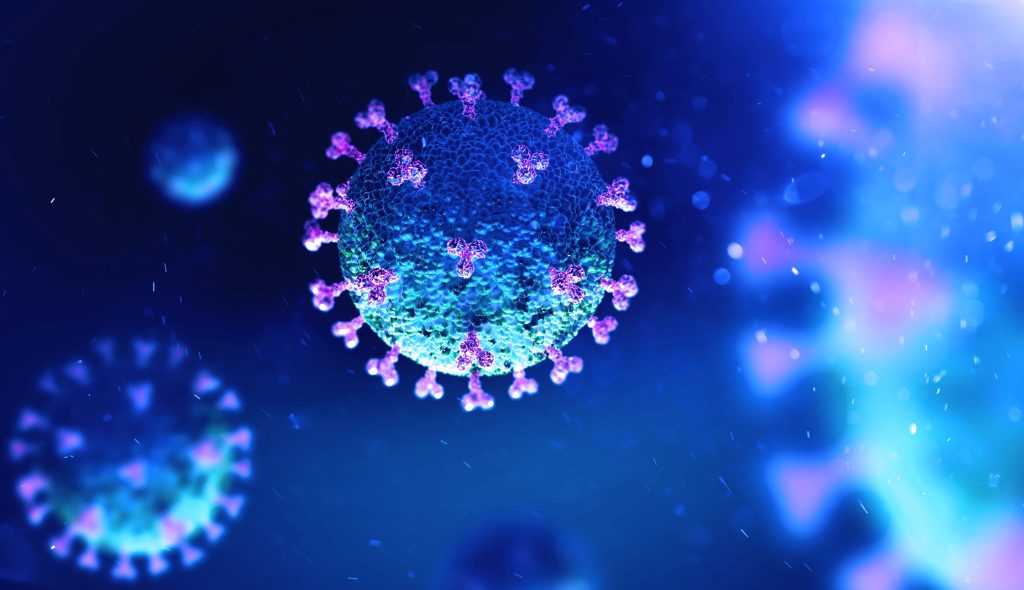Ever since the first coronavirus case was reported on 31st December 2019 in Wuhan, China, the world has witnessed one of the biggest pandemics in the last two years. The Coronavirus Disease, also known as COVID – 19, is an infectious disease that is caused by the SARS-CoV-2 virus. According to medical experts, COVID – 19 triggers respiratory tract infection. This can affect your upper respiratory tracts, which includes the sinuses, nose and throat, as well as the lower respiratory tract, which includes the windpipe and lungs. The severity of the symptoms and infection can range from mild to severe depending on several factors.
The COVID – 19 infection mostly spreads through person-to-person contact. It usually spreads from the infected person’s nose or mouth in small liquid particles when they cough, sneeze or even speak, and is inhaled by another person. The virus can also spread in poorly ventilated public settings, where people tend to spend longer periods of time. People can also get affected by coming in contact with high touch surfaces such as tables, desks, door knobs, faucets and more, as these surfaces are likely to be used by infected people.
Some of the most common symptoms of COVID – 19 include fever, coughing, breathlessness, fatigue, and loss of smell or taste. The other less common symptoms are chills, body ache, sore throat, nasal congestion, runny nose, rash/discoloration on skin, irritation or redness in the eyes, nausea, and diarrhea. People with underlying medical conditions such as cardiovascular disease, diabetes, cancer, and respiratory conditions such as asthma are likely to display severe symptoms as compared to the others, since their immune system is more compromised.
Like any other virus, the coronavirus too has the tendency to mutate or change. There are now several variants of the coronavirus, and some of them are proving to be more contagious and deadlier as compared to the original virus. Scientists and medical experts from across the globe are studying these different strains and variants to understand how fast each variant spreads and how severe can their symptoms can be. Throughout the COVID – 19 pandemic, scientists have kept track of several coronavirus variants such as:
- Alpha
- Beta
- Gamma
- Delta
- Lambda
- Mu
- Omicron
Out of these variants, the Delta variant seems to be the deadliest variant, leading to more hospitalization and fatalities, as compared to the other variants. The latest coronavirus variant is Omicron, and scientists are now thoroughly studying its patterns, transmissibility and severity.
Understanding the Omicron variant
The first case of the Omicron variant was reported on 24th November 2021 from South Africa to the World Health Organization (WHO). Several medical health experts are studying this relatively new variant to understand the many aspects of Omicron.
In India, the first case of Omicron was detected on 2nd December 2021 in the state of Karnataka, and is rapidly spreading across the country. Though there is no clarity on whether this variant is more transmissible or severe compared to the others variants, researchers and experts have observed patterns of spread of the Omicron infection across the globe to provide the cure and preventive measures.
According to the World Health Organization (WHO), preliminary evidence suggests that there might be an increased risk of reinfection with Omicron in comparison to the other variants. This means that people who have previously been diagnosed with COVID – 19 could become more easily infected with Omicron, and are more susceptible to the variant.
According to CDC, the Omicron variant is more likely to spread faster than the original SARS-CoV-2 virus. CDC also expects that anyone can get infected with Omicron, regardless of whether they are vaccinated or not.
Symptoms of Omicron
Though the symptoms of the coronavirus disease have more or less remained the same, regardless of the variant, there are some symptoms that are more prominent than the others. During the Omicron, many people are reporting symptoms that are more in line with common cold. The top 5 symptoms of the Omicron variant include:
- Runny Nose
- Headache
- Fatigue
- Sneezing
- Sore Throat
Some of the other Omicron symptoms that were reported are itchiness in the throat, dry cough and lower back pain. The classic COVID symptoms of fever and loss of taste/smell are slightly less frequent with Delta and Omicron in comparison to the original coronavirus and the Alpha variant.
Preventing the spread of Omicron



Though reports suggest that the Omicron infection is milder compared to the other variants, it is highly important to take the necessary precautions to keep the disease at bay. According to reports, the COVID – 19 vaccines are highly effective at preventing severe illness, with lower possibility of hospitalization. Medical experts are now studying how effective the vaccines are against the Omicron variant.
If you are not fully vaccinated, it is important to complete all the doses of your vaccination. You should also ensure that you are fully masked, maintain social distancing, sanitize frequently and stay in properly ventilated spaces. Though there have been very few fatalities pertaining to Omicron, it should not be dismissed as mild. Get yourself tested immediately in case of any symptoms and diligently follow the COVID – 19 precautions, because prevention is always better than cure!
References:
https://www.cdc.gov/coronavirus/2019-ncov/variants/omicron-variant.html
https://time.com/6138293/omicron-symptoms-covid-19/
https://www.who.int/emergencies/diseases/novel-coronavirus-2019




Comments are closed.